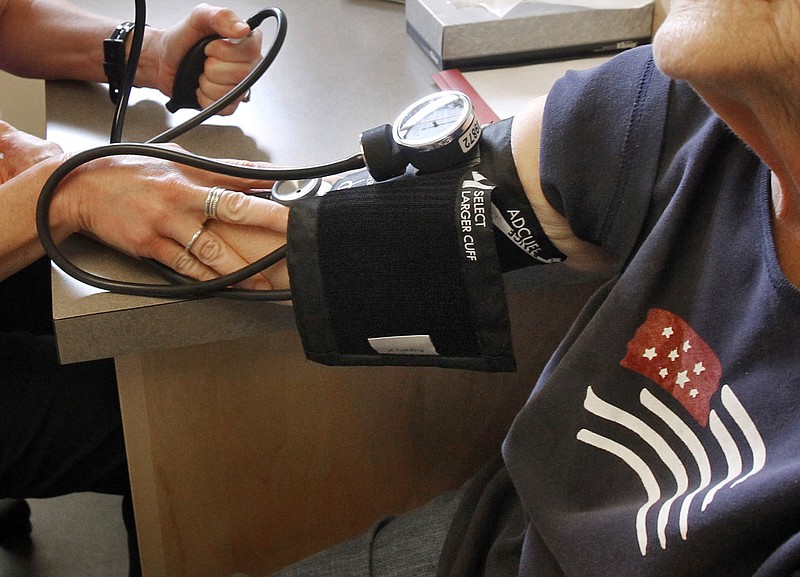Hypertension, or high blood pressure, affects the health and wallets of more than 75 million U.S. adults, and the cost of managing this condition is growing, according to a new study from the Health Care Cost Institute.
The study released Tuesday analyzed data from employer-sponsored health insurance claims of adults between the ages of 18 and 65 and found that adults with hypertension accounted for 40.8 percent of all health care spending.
By the numbers
Uncontrolled high blood pressure increases your risk for dangerous health conditions:First heart attack: About 7 of every 10 people having their first heart attack have high blood pressure.First stroke: About 8 of every 10 people having their first stroke have high blood pressure.Chronic heart failure: About 7 of every 10 people with chronic heart failure have high blood pressure.Kidney disease is also a major risk factor for high blood pressure.Source: The Centers for Disease Control and Prevention
On average, people with high blood pressure spent about three times more on health care than those without and about two times more out of pocket. Spending for those with hypertension grew 18.3 percent from 2012 to 2016 to $14,399 a year, compared to a 14.3 percent increase to $4,596 a year for adults without.
"Hypertension is one of the most common chronic conditions in the U.S. and a contributor to two leading causes of death: heart attack and stroke. It's vital to understand the underlying drivers of spending and cost growth in this population," HCCI President Niall Brennan said in a statement.
Alabama, Tennessee and Georgia rank among the top 10 states with the highest rates of hypertension, causing concern among both medical professionals and policymakers.
Arteries transport blood from the heart throughout the body, but sustained levels of high blood pressure within those artery walls can wreak havoc on blood vessels and the heart, often without showing symptoms.
Genetics and age may increase the risk of hypertension, but it's primarily caused by lifestyle factors like stress, smoking, limited exercise, poor diet and alcohol. If healthy behavior changes don't correct the problem, doctors may prescribe medication to lower blood pressure.
In the study, the fastest growing category of spending for people with hypertension was prescription drugs, which increased by 27.2 percent over the four-year period. This increase was mainly driven by purchasing of higher-priced, brand-name drugs, although a growing portion of prescription drugs used were lower-cost generics.
"Which drugs people were spending money on were actually slightly different than which drugs most were using," said, Bill Johnson, senior researcher at HCCI. "That suggests that these were sort of two separate trends."
He said the report illustrates changes in the cost of health care for people with high blood pressure but doesn't address why these trends occurred. Possible factors include a heightened awareness of hypertension's negative effects, more people seeking treatment, high costs of branded drugs and the availability of generic drugs.
The cost burden of hypertension could be even higher, Johnson said, because new guidelines released in November lowered the threshold for high blood pressure diagnosis. Also, only 18 percent of the report's sample were diagnosed with hypertension, but according to the Centers for Disease Control and Prevention, high blood pressure affects about a third of Americans.
"The percentage of spending that people with hypertension account for within the entire United States is probably higher than 40 percent, especially because we only look at people with employer sponsored health insurance," Johnson said. "We could be missing people that have hypertension but it's either undiagnosed or they don't get any health care services through their employer."
Contact staff writer Elizabeth Fite at efite@timesfreepress.com or 423-757-6673.
